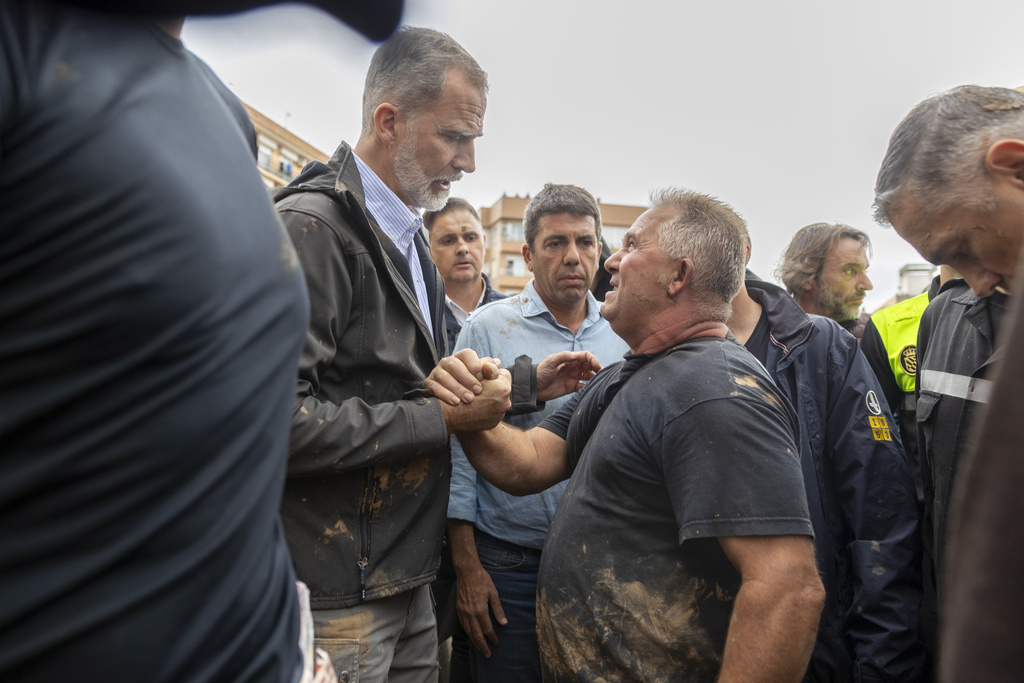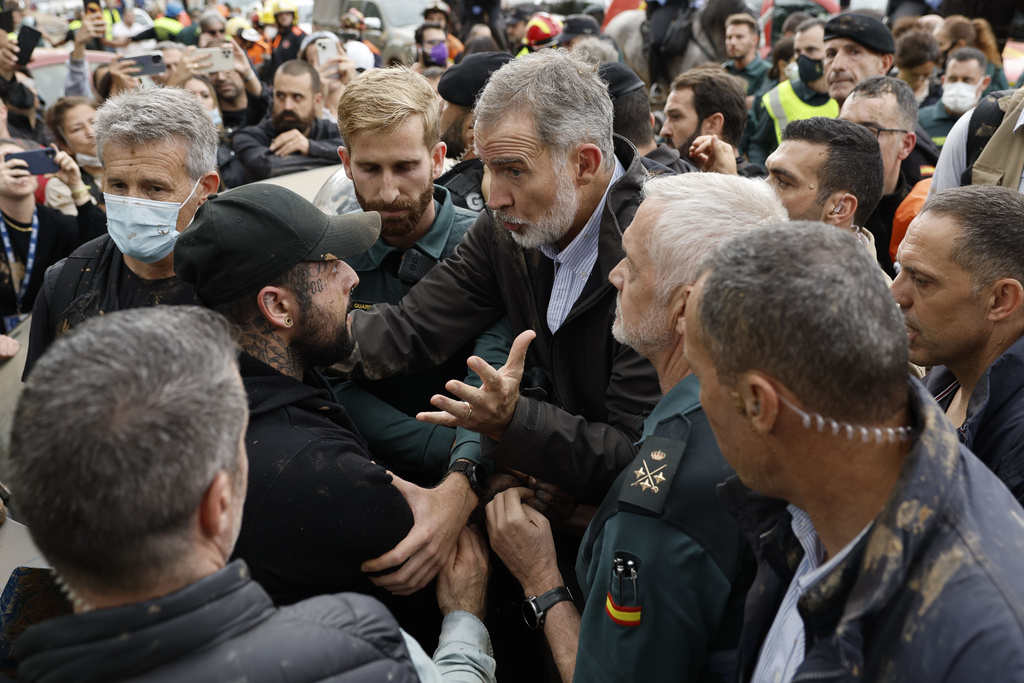Felipe VI Stands Ground in Valencia Amid Anger Over Flood Crisis \ Newslooks \ Washington DC \ Mary Sidiqi \ Evening Edition \ Spain’s King Felipe VI stood in solidarity with flood-ravaged communities in Valencia, facing mud-slinging protesters as anger boiled over regarding the government’s response to the devastating floods. His decision to remain and engage with furious residents marks a defining moment of his reign, but experts warn it may create unrealistic expectations of his largely ceremonial role. The historic floods have killed over 200 people across Spain, and the destruction continues to strain both local resources and the monarchy’s influence.

Spain’s King Felipe VI Confronts Mud-Slinging Protesters Amidst Flood Crisis Quick Looks
- Historic Public Outcry: King Felipe VI and officials face angry flood survivors, with mud hurled at them in Valencia.
- A Defining Moment: Felipe’s choice to stay among protesters could reshape his reign.
- Flood Aftermath: Spain’s recent floods have claimed over 200 lives, including more than 60 in Paiporta.
- Mixed Reactions: Felipe’s presence is seen as symbolic, but some caution it raises unrealistic expectations.
- Royal Show of Strength: Queen Letizia also stayed with the crowd, listening to their demands and criticisms.
Deep Look
This moment—called iconic by some—occurred when Felipe and a delegation of top officials, including Prime Minister Pedro Sánchez and Valencia’s regional president, visited the flood-ravaged area of Paiporta for the first time since the disaster. The royal couple was quickly surrounded by frustrated residents, many wielding shovels they had been using to dig out their homes. Shouts of “Get out!” and “Killers!” rang through the crowd as debris flew, coating Felipe’s black jacket and hitting him squarely on the cheek. Queen Letizia, standing alongside him, also found her hands and clothing smeared with mud. Despite the hostile reception, Felipe and Letizia chose to remain, speaking with residents who voiced their anger at the state for what they see as a failed response to Spain’s deadliest natural disaster in recent history.
Political analyst Oriol Bartomeus noted the significance of the scene, calling it “the greatest day of Felipe’s reign.” He praised the king’s courage and composure, suggesting that his decision to stand his ground demonstrated a deep commitment to his duty as monarch. “Had he hidden behind his guards, it would have been the darkest day of his reign. Instead, he showed why he is king, demonstrating composure and determination, connecting with the people,” Bartomeus said. His choice to interact directly, despite the visible hostility, could be a turning point in public perception of the monarchy’s role in contemporary Spain.
The recent floods, the worst in Spain’s modern history, have highlighted both the need for swift government action and the limitations of Spain’s monarchy. Felipe’s presence among the mud-slinging crowd raises questions about whether the symbolic support of the royal family can meet the needs of communities grappling with loss and destruction. His display of solidarity is contrasted with the more scandal-ridden legacy of his father, Juan Carlos, whose reign ended amid allegations of financial misconduct and a lavish lifestyle. Inheriting the throne in 2014, Felipe’s reign has thus far been characterized by efforts to present a more austere, distant image—an approach now dramatically challenged by this direct engagement with his people.
Montserrat Nebrera, a professor of constitutional law at the International University of Catalonia, believes Felipe’s interaction with the crowd could set a new precedent for public protest directed at the monarchy. “Never had such anger been shown to the king,” Nebrera observed. She pointed out that while Felipe’s involvement underscores his commitment to his people, it could also lead to misconceptions about his actual power in the recovery efforts. The king’s role in Spain is largely symbolic, bound by constitutional limits that restrict him to ceremonial duties and state representation rather than direct governance.
Nonetheless, Nebrera expressed caution about the potential fallout from this symbolic gesture, noting that Felipe’s involvement alongside elected officials may create the impression that he holds a tangible role in the flood recovery. “If there already existed a certain confusion about the king’s powers, now people may mistakenly believe he is responsible for aspects of the relief response,” she explained. The king’s post-visit involvement, including his attendance at a crisis meeting in Valencia alongside Sánchez and his participation in a government crisis session at a military base near Madrid, could fuel expectations that are beyond his power to fulfill.
The symbolic weight of Felipe’s moment in Paiporta has also drawn global attention. In an era where public figures are scrutinized more closely than ever, Felipe’s stand against the tide of public anger has underscored the resilience of Spain’s constitutional monarchy—but also its constraints. With recovery efforts ongoing and reports of continued suffering in the region, the king’s support may prove meaningful to those affected, but it cannot substitute for direct action by the Spanish government.
Beyond the immediate situation in Valencia, the flood crisis has strained Spain’s resources and revealed significant shortcomings in infrastructure preparedness and crisis response. Aid organizations and international bodies, including U.N. Secretary-General António Guterres, have voiced urgent calls for relief, and humanitarian organizations are mobilizing to provide aid. Meanwhile, analysts caution that as Felipe’s involvement fades, public dissatisfaction may shift back to elected leaders and relief organizations, who now face the task of meeting the growing demands of flood survivors.
Felipe VI Stands







